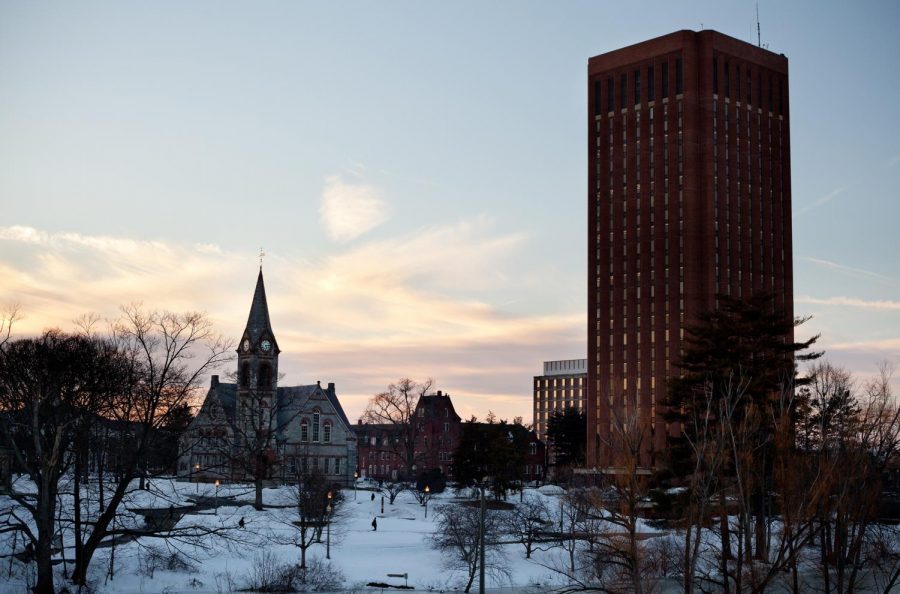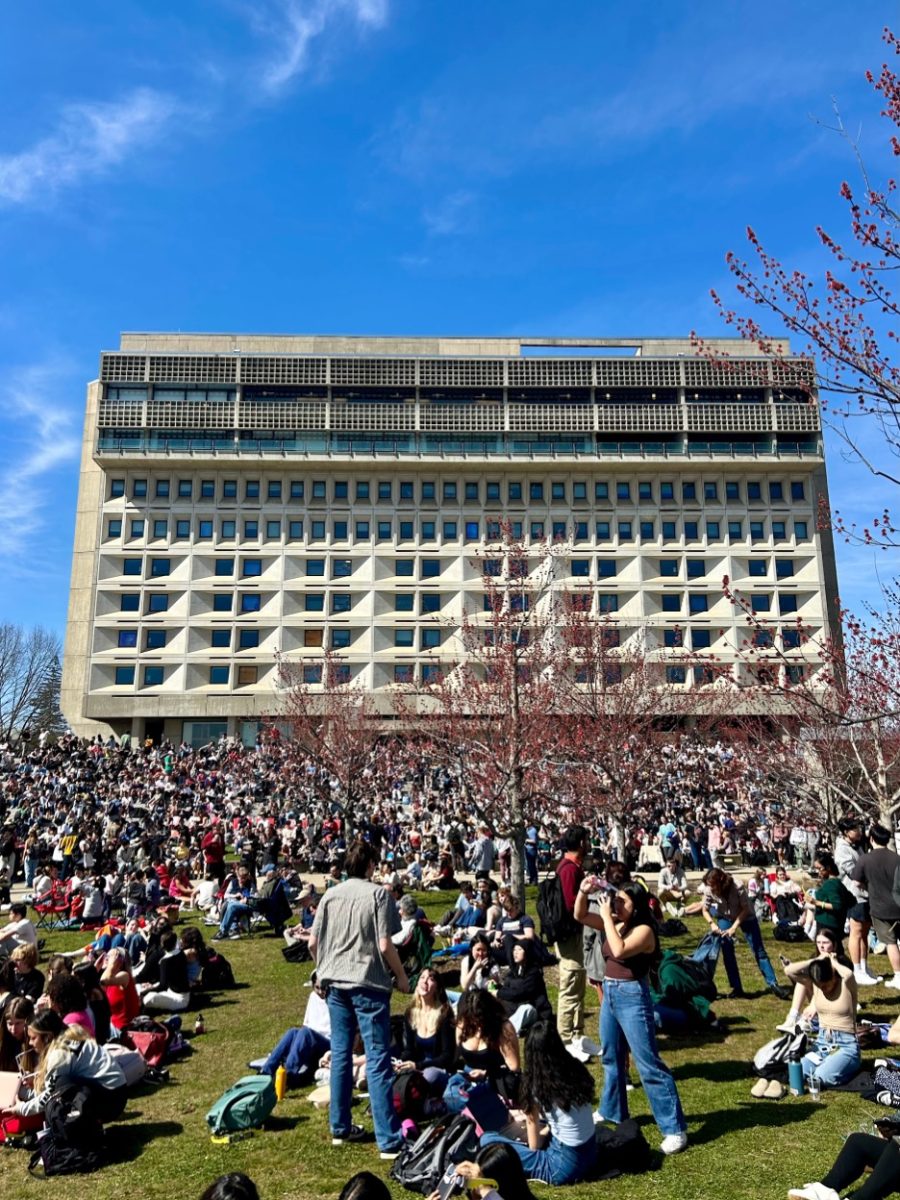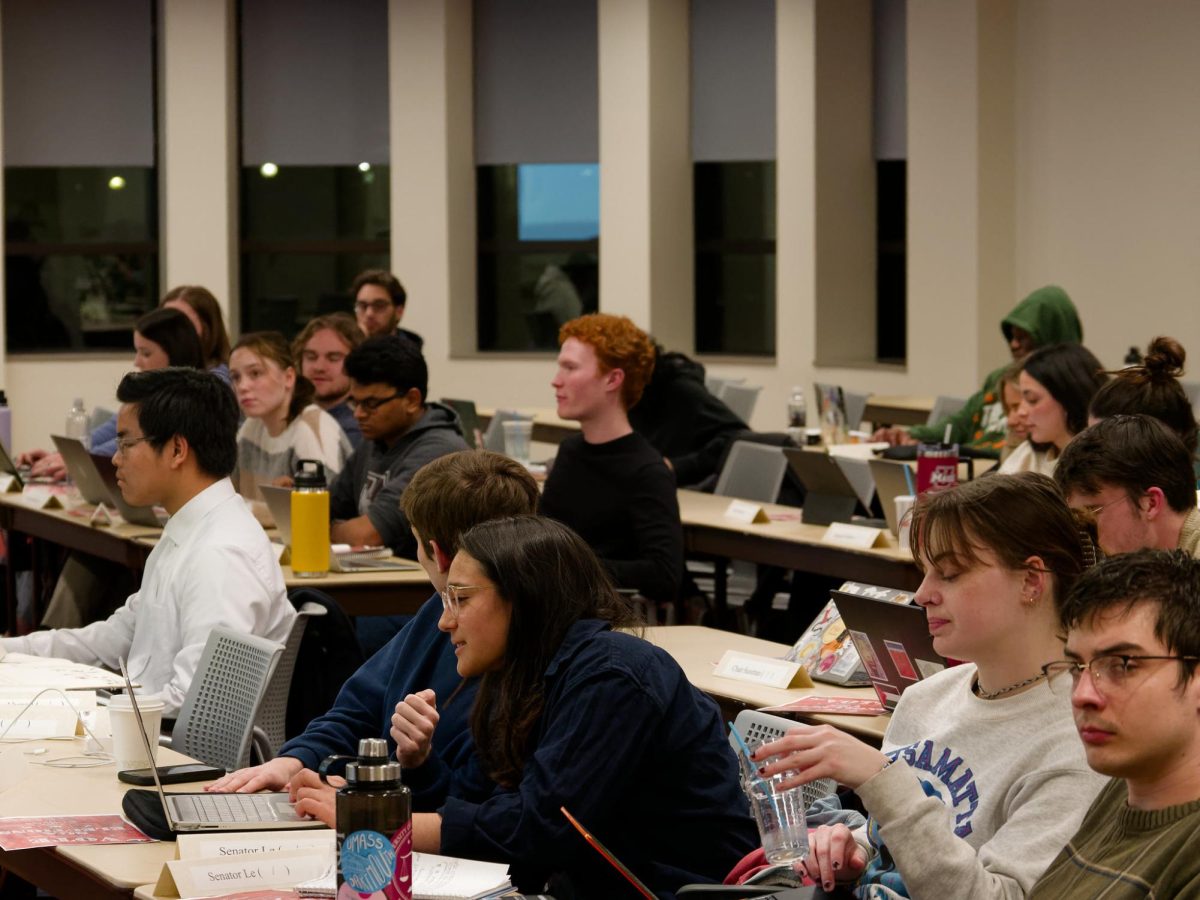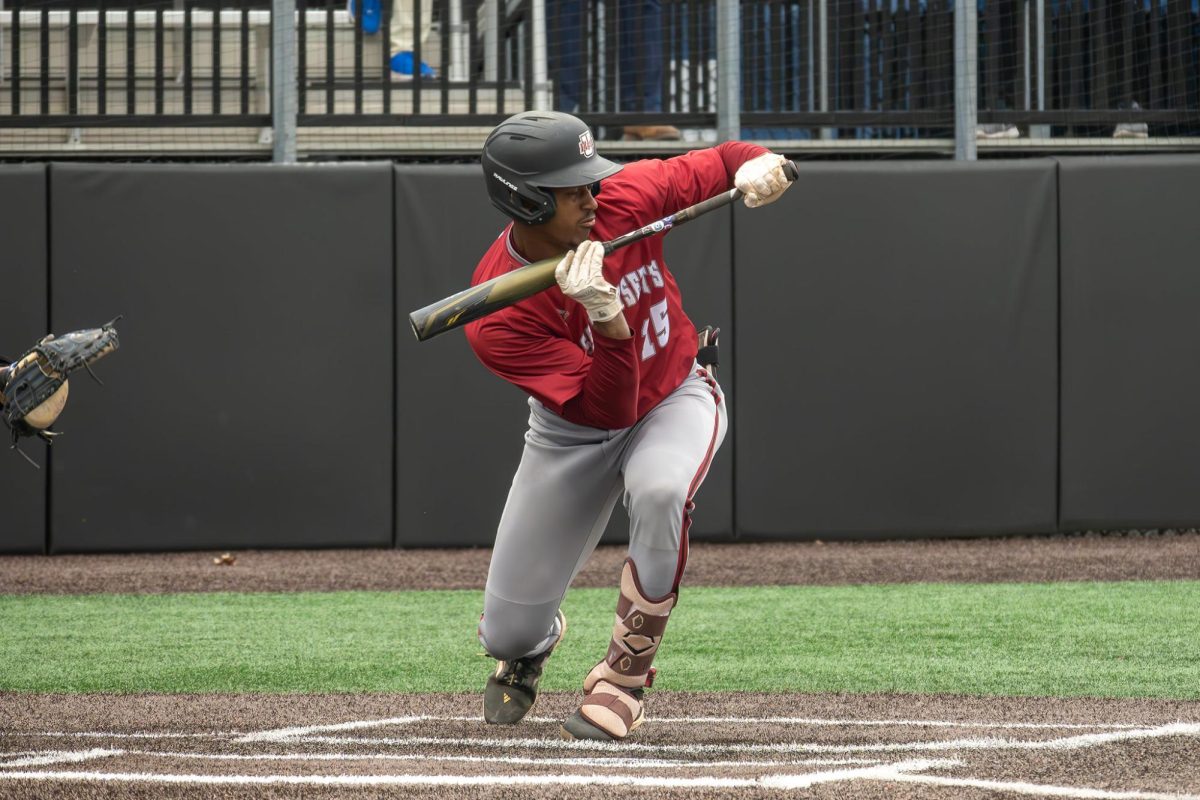The Carbon Mitigation Task Force at the University of Massachusetts has its sights set on a carbon neutral campus by 2032.
Birthed from the Chancellor’s Sustainability Advisory Committee (CSAC) and its initiation of the Sustainability Integration Project (SIP), the task force is addressing one of three campus sustainability priorities. Since April 2019, the task force has been looking into the technicalities of developing “a comprehensive, high level feasibility study that seeks to achieve carbon neutrality from 100 percent renewable energy for all heating, cooling and electricity systems of the main campus by 2030,” per UMass Sustainability’s website.
“We initiated a carbon mitigation task force made up of faculty, staff and students,” said Ezra Small, UMass campus sustainability manager. “[We] then decided that we needed to hire a consultant team to help us develop an engineering feasibility study to see what it would take to meet the Chancellor’s charge.” Small mentioned that creating this plan is an important step in intentionally addressing the impacts of global climate change in the Pioneer Valley.
UMass has a history of student action surrounding the University’s climate decisions and awareness. For 80 years, UMass burned coal for heat and electricity; In 2009, its coal-burning power plant was replaced by a Central Heating Plant (cogenerating steam and electricity) that instead burns natural gas and reduces campus greenhouse gas emissions.
“We closed the coal plant and we transitioned to this natural gas plant, which has won EPA awards for efficiency,” Small said. “We transitioned, and inherently reduced our campus emissions by almost 30 percent, just by doing that and a bunch of energy efficiency projects as well.”
According to Small, while UMass met the Massachusetts Global Warming Solutions Act’s 2015 goal for a 30 percent reduction of emissions by 2020, at its current rate, UMass will not meet the 2020 goals of a 45 percent reduction by 2030. Although the existing Central Heating Plant is more efficient and environmentally friendly than burning coal, natural gas was never a long-term solution. Small said that natural gas “was always considered a ‘bridge fuel’ to renewables” until renewable energy became more market available.
The task force believes the urgency of this transition has never been more apparent and that the time is now to bridge.
“The plan is riding the coattails of the decarbonization of the grid, as well,” Small said. “We essentially have to electrify our energy system because you can’t burn fossil fuels and be 100 percent renewable.”
While the final plan is not yet complete nor released, the proposed switch to renewables includes varying degrees of transition. Doing so involves replacing carbon and energy-intensive steam practices with around 26 miles of water lines to instead use low-temperature hot water to heat and cool buildings. All steam lines would be removed, and buildings would be renovated to use hot water radiators instead of steam radiators, said Small.
These changes would occur over a phasing of time and projects.
“Once you start using low temperature hot water, you can start doing geothermal and geoexchange and doing big wellfields, where you use the constant energy that’s in the ground,” Small said. “But you have to first get off of steam.”
The changes to campus electricity are at the heart of the carbon neutrality plan because it relies on electric heat pumps to pump low-temperature hot water through pipes. At this time, UMass makes 70 percent of its electricity at its Central Heating Plant and buys 30 percent from the state grid. Those percentages will change under plan projections.
“We’re not going to be producing [all of] that electricity anymore, so we’re going to be more reliant on the grid,” Small said.
“We are really lucky that [grid greening] is happening across the state and across the region because it goes hand in hand with what’s happening at the larger scale. So, if [Massachusetts is] greening the grid, we’re going to purchase more of that green grid, and we’re inherently going to become more renewable.”
The state of Massachusetts has a goal to reach 100 percent renewable energy by 2050. By decreasing both Scope 1 (campus) and Scope 2 (grid) emissions, the task force is optimistic that the state’s goal will aid UMass’ clean energy transition by providing plentiful green energy options. If implemented soon, the task force has found that UMass could reach 100 percent renewable energy almost 20 years ahead of the state goal.
Small admits that while the plan is “incredibly ambitious,” and will require major investment and physical disruption of the campus, it is realistic. “If we’re going to be a leader in climate action, this is just something we have to do,” he said.
The question of cost, University and federal funding for this project is still under review. The project will be capital intensive but will continue to place UMass at the forefront of campus sustainability.
“It’s not just [about] trying to be progressive, but it’s also [about] how we can influence and push the state, push other public institutions around the country, to really think more aggressively,” said Jon Blum, senior economics major and undergraduate representative on the task force.
Blum also emphasized the importance of student engagement, town support and continual communication. He wants students to take this opportunity to research, advocate and circulate energy to further support the transition.
“[It’s] all about how we can ingrain that in the campus culture [and] make this transition a very active participatory environment for students.”
Ella Adams can be reached at [email protected]. Follow her on Twitter @ella_adams15. Olivia LeDuc can be reached at [email protected]. Follow her on Twitter @leduc_olivia




















